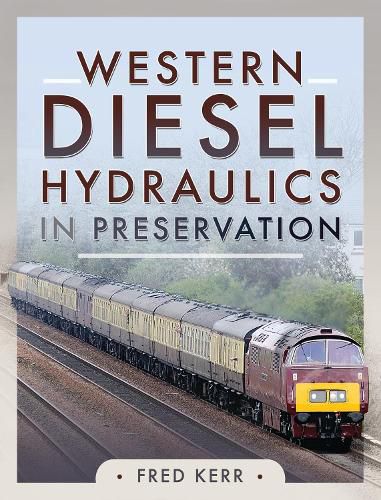Western Diesel Hydraulics in Preservation
Fred Kerr

Western Diesel Hydraulics in Preservation
Fred Kerr
When British Railways initiated its Modernisation Plan in 1955, its Western Region elected to trial locomotive designs with hydraulic transmission whilst BR encouraged designs with electric transmission. The Western Region felt that the lighter weight of 78 tons for a diesel hydraulic locomotive producing 2000 hp, compared to an equivalent weight of 132 tons for a diesel electric locomotive producing 2000 hp, would better meet BR’s requirement for a modern locomotive. BR’s failure to follow up with its declared policy of having all freight vehicles fitted with brakes saw operators preferring the heavier diesel electric designs which proved more able to operate trains without through brakes at higher speed. The greatest concern was with operating costs whereby the Western Region policy of replacing components at the depot then transferring them to Swindon for repair incurred heavy costs that were reflected in the maintenance cost per locomotive. Given the smaller number of diesel hydraulic locomotives and the larger number of diesel electric locomotives it was little surprise that by the mid-1960s a cost comparison showed that the build and operation of diesel electric locomotives was increasingly cheaper over the long term. Furthermore the increased availability of diesel electric locomotives released by a combination of factors provided an opportunity to replace the diesel hydraulic fleet, which was withdrawn from service during the 1970s.The preservation of redundant locomotives was slow but once it was confirmed, by the preservation of ‘Hymek’ Class 35 D7017 in 1975, that public appeals could quickly fund the preservation of withdrawn examples further public appeals followed. In a short space of time 31 locomotives from a mixed fleet of 358 locomotives entered preservation to remind both enthusiasts and the public of a concept (i.e. hydraulic transmission) that had had much to offer but had been dismissed on questionable financial grounds.
AUTHOR: Fred Kerr is a photographer whose lifelong interest in railways began in Edinburgh during the early 1950s and continued when his parents moved to Corby in 1956. His interest in railways included the ‘new’ diesel locomotives that first appeared at nearby Kettering as steam traction gave way to diesel traction. When he began work in the 1960s his income allowed an introduction to photography, which enabled him to begin recording the rail scene as an adjunct to his diaries of locomotive sightings recorded from 1963. These diaries record the ever-changing railway scene and, since privatisation of the railways in 1994, have noted the changes incurred by both new operators and operations. Now retired, Fred continues to take photographs and has begun sorting his extensive photography collection to create a series of ‘potted’ histories with this, Diesel Hydraulic Main Line locomotives in Preservation, being the latest. The diesel hydraulic designs had offered a solution to BR’s modernisation needs but its reluctance to modernise other parts of its operation led not only to the early withdrawal of the diesel hydraulic fleet but also the opportunity for examples to be preserved and enjoyed on heritage lines within the UK -as recorded within this album.
200 colour illustrations
This item is not currently in-stock. It can be ordered online and is expected to ship in approx 2 weeks
Our stock data is updated periodically, and availability may change throughout the day for in-demand items. Please call the relevant shop for the most current stock information. Prices are subject to change without notice.
Sign in or become a Readings Member to add this title to a wishlist.


